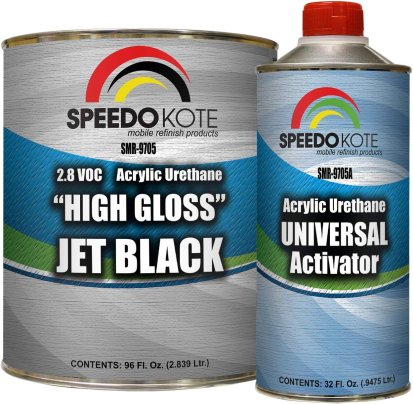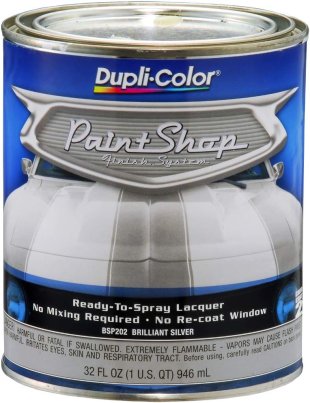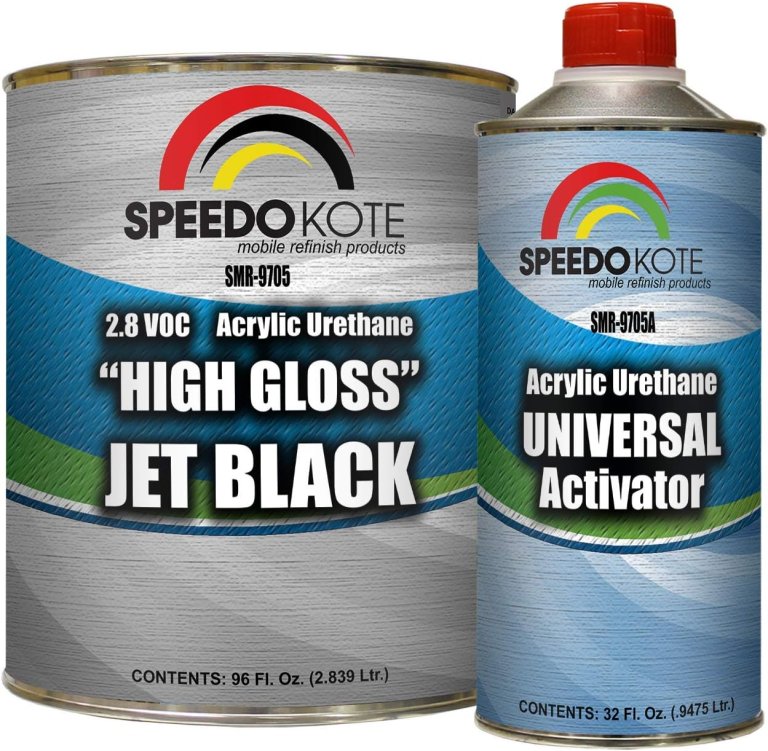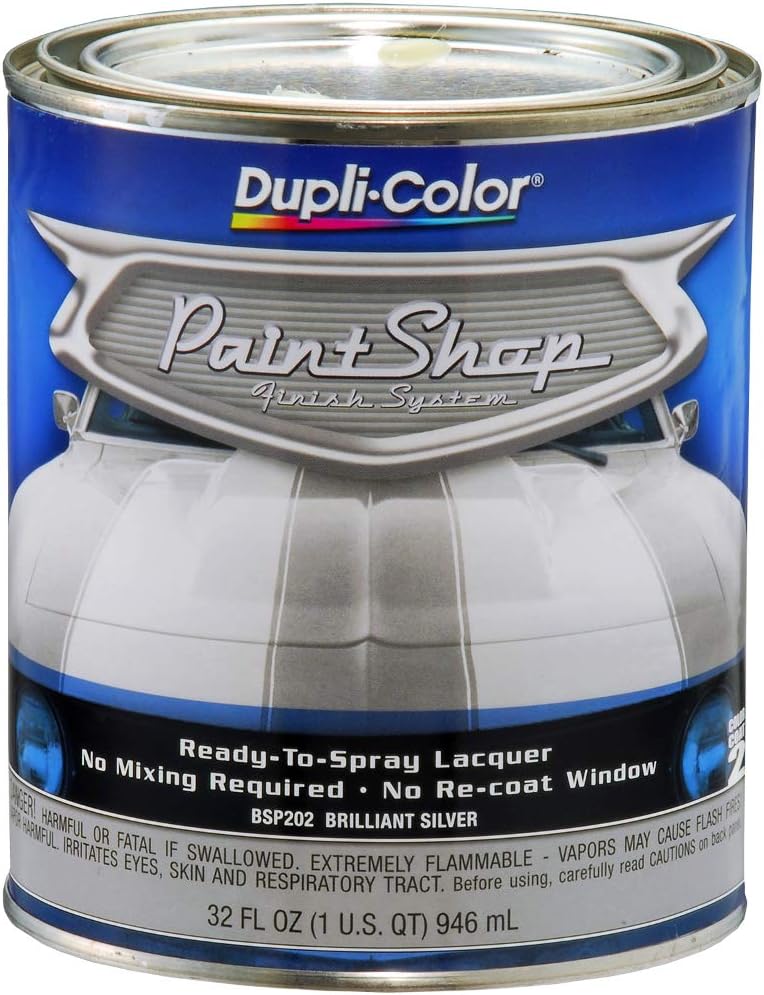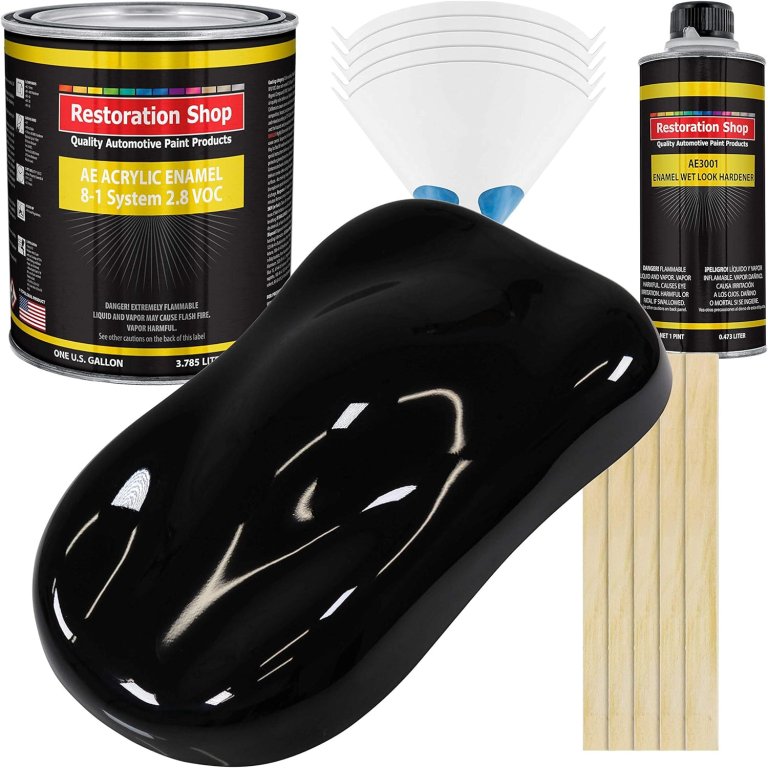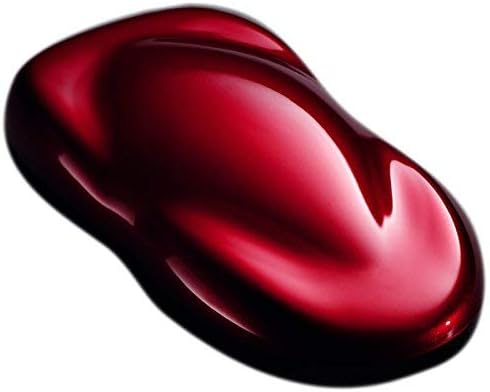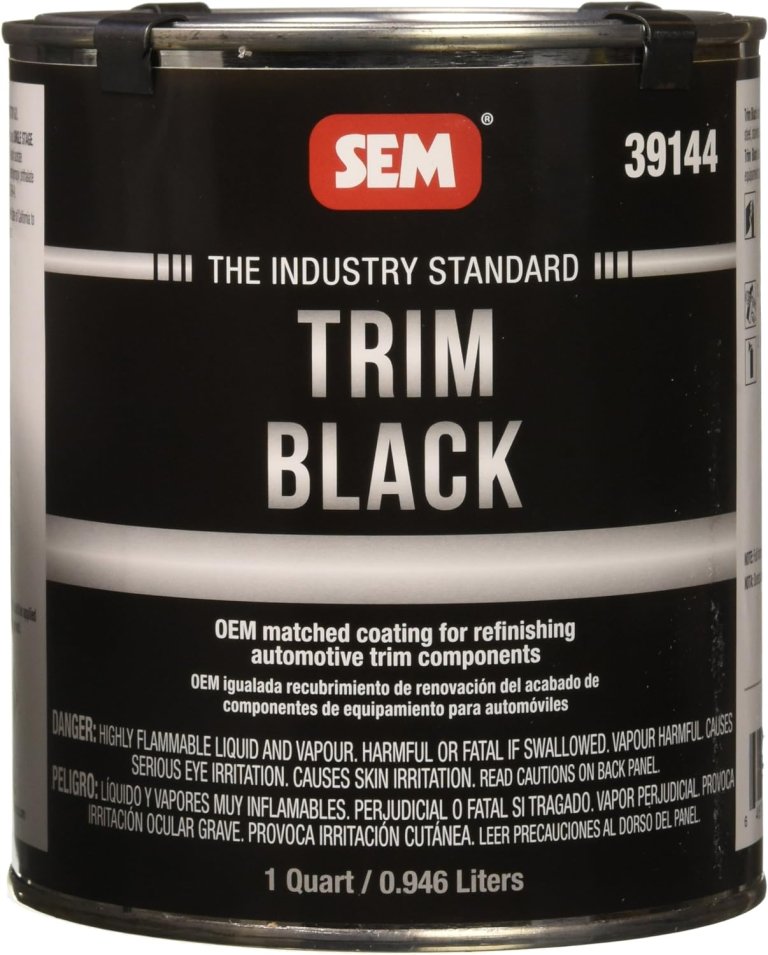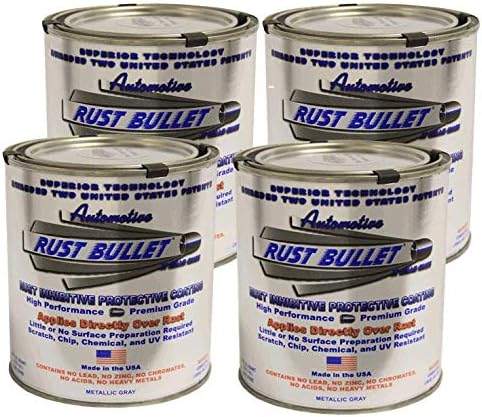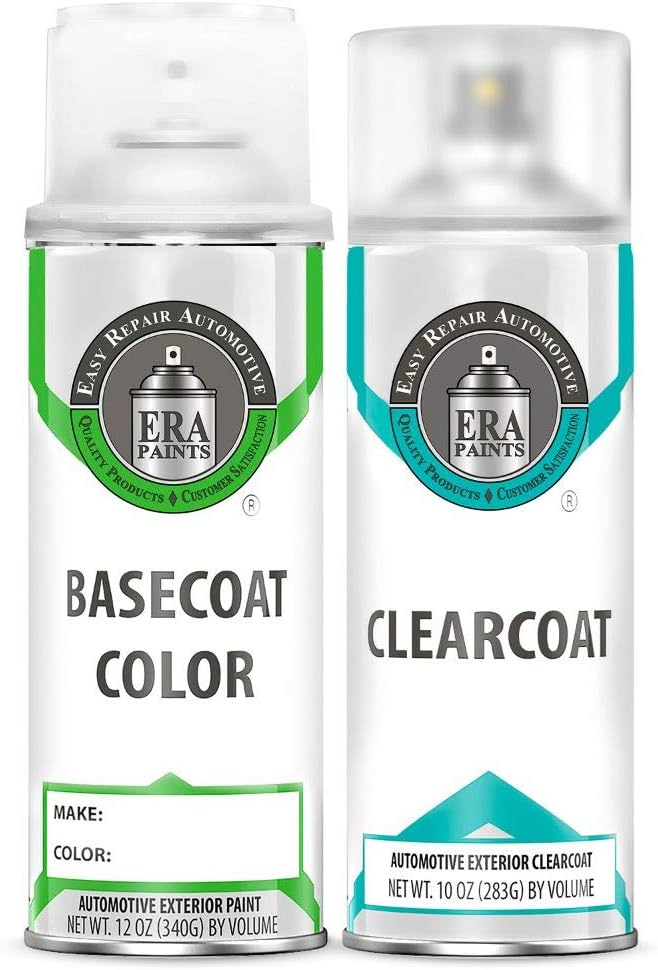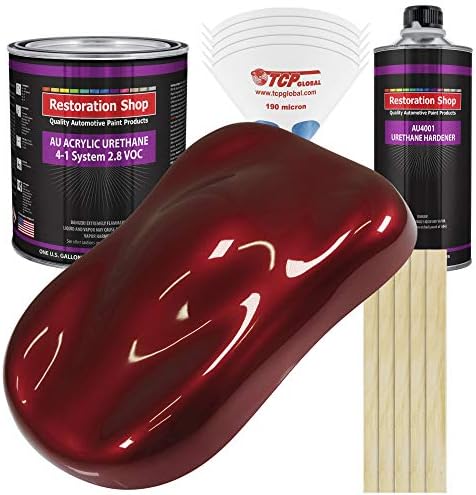We may earn revenue from the products available on this page and participate in affiliate programs. Learn more ›
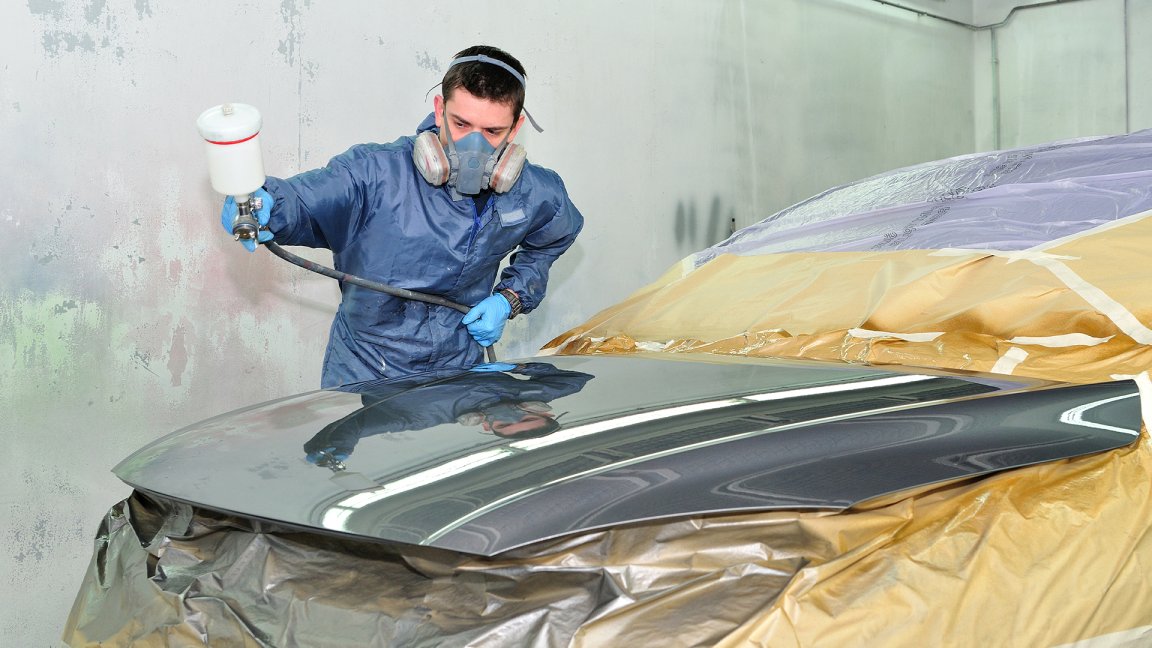
If you’re a car person, you appreciate making a personal statement on some level or another. That does not mean you need to rock a goatee and wear cutoffs that show off your killer tats. While the make and model is enough to let people know what you’re all about, that paint job does all the heavy lifting. If you’re not in on the whole ratty car theme and aren’t willing to pay someone else to do it, you’re going to need to buy paint at some point or another. You need to do as much research as possible to make sure you do the work right. I can still provide you with some insight on what paint to consider and give you some tips along the way.
Our Methodology
You already know how we stick to our trusted routine of doing all of the homework for you to ensure anything on this list is worth the money. Painting is an art. You can go about it like it’s just a coating to add protection and color and use the first thing in front of you. However, if you are after a specific texture or shade, you really want to dive deeper. Talk to pros, go to shows, ask questions, and do the research to make sure you do find the paint that’ll provide the look your heart desires.
Best Automotive Paint Reviews & Recommendations
Best Overall
Speedokote High Gloss Jet Black Acrylic Urethane
Check Latest PriceBest Value
Dupli-Color Paint Shop Finish System
Check Latest PriceHonorable Mention
Restoration Shop Jet Black Acrylic Enamel
Check Latest PriceBest for Customs
House of Kolor Brandywine Kandy Shimrin2 Base Coat Automotive Paint
Check Latest PriceBest Parts-Specific Paint
VHT Real Red Brake Caliper Paint
Check Latest PriceBest for Interior
Dupli-Color Flat-Black High Performance Vinyl and Fabric Spray
Check Latest PriceBest for Trim
SEM Trim Black
Check Latest PriceBest for Chassis
Rust Bullet Automotive Rust Inhibitor Paint
Check Latest PriceBest for Touch-Ups
ERA Paints Pick Your Color Automotive Touch-Up Paint Kit
Check Latest PriceBest Single Stage for Show
Restoration Shop Fire Red Pearl Acrylic Urethane Auto Paint
Check Latest PriceOur Verdict on Automotive Paint
Again, Speedokote High Gloss Jet Black Acrylic Urethane takes our top pick based on the quality, price, and ease of use. However, the Dupli-Color Paint Shop Finish System is another solid choice when the budget is tight. So many factors determine what works best for you. Be sure to reach out and let us know which paint you like most.
What to Consider When Buying Automotive Paint
The last thing you want to do is grab the first paint recommended to you without knowing at least a little bit about what you’re dealing with. Below you will find info on the different types, the brands you should know about, and some tips to keep in mind. Again, you should do as much research as possible as there are a lot of factors that will determine what exactly you need for your situation.
Types of Automotive Paint
Plasti Dip
Plasti Dip is an affordable rubberized coating that works as an alternative to traditional automotive paints. With enough coats and depending on where on the vehicle it is applied, Plasti Dip can weather prolonged use relatively well. However, excessive wear and tear can cause the Plasti Dip to deteriorate prematurely, requiring removal and reapplication. It’s important to note that using Plasti Dip is a craft in itself and getting it right does take experience.
Spray Paint
Spray paint is often viewed as a way around paying for professional equipment and good paint. Some spray paint jobs can be very impressive, and spray paint is a great way to touch up imperfections or panels if the budget is tight. However, painting the entire car will consume a surprising amount of it, and ultimately the cost won’t be far off from a DIY job with a paint gun. The results also won’t be quite as good in most cases.
Water-Based
Water-based paints only include a small amount of solvent used in the process of adhering to the vehicle. They’re not as toxic to work with and actually dry faster than solvent-based paints. You might think you’d need to apply more coats, but that’s not the case. The water acts as a carrier and dissipates once the paint is applied, so you won’t get as many toxic chemicals off-gassing, even after the paint is cured.
Solvent-Based
When people typically think of automotive paint, solvent-based paints are what usually come to mind. Solvent-based paints typically have higher amounts of toxic chemicals that mandate the use of respirators and proper ventilation. These types of paint can have lacquer, enamel, or urethane as a basis, each with their own pros and cons. These solvents act as a carrying agent and bring the paint molecules to the vehicle’s surface.
Single-Stage
As you’ve probably deduced from the name, single-stage paints lay down in a single stage with no additional top coats needed. These are easier to apply on a vehicle because they simplify the process, but there are some trade-offs. The paint isn’t all that durable. Buffing and polishing will quickly pull away layers, it’s susceptible to premature breakdown, and it’s often harder to get that glass-like finish with it. Single-stage paint jobs are typical when the owner is trying to replicate what a car originally came from the factory with.
Two-Stage
Two-stage paints use a color coat for the base, which is followed up with a clear coat. This is almost always the superior choice unless you’re after a period-correct finish. The clear coat offers excellent protection from the elements and other harsh conditions and provides depth to the paint job. It will take more time and money but might last longer and look better.
Part Specific
Sometimes you don’t want to paint your whole vehicle; you want to simply highlight a certain feature or improve the overall look of that area. You can use part-specific paints for things like brake calipers, wheels, engine blocks, and any other area that will take paint. What makes them part specific is that they are designed to resist specific threats to certain areas such as heat.
Automotive Paint Key Features
Finish
The color and finish go hand in hand to produce the look you’re chasing. If you want something simple but with some shine, gloss is the way to go. You can also knock the shine down by opting for satin or matte paints. Pearlescent coats are always an option for those who really want those body lines to work their magic. It’s hard to describe the exact textures you can achieve with finishes, so you will want to look around for visual representations to find what you’re after.
Paint Type
Before you get your heart set on any shade, consider what type of paint will be best for your situation. Consult our paint type section above for reference. Will you be transporting the vehicle outside and in the elements for most of its life? You should probably choose a two-stage paint. If you want to stick to the original finish, single-stage will likely give you the results you’re looking for.
Automotive Paint Pricing
You’re going to spend more on paint than you initially think. While most aerosol cans cost $10 to $20 apiece, you can count on buying a ton of it if you intend to paint an entire car. A $50-$100 DIY-grade gallon of paint will cost way less in the long run. Specialized coatings for chassis and trim generally fall within the same price range. If you’re looking for an OE paint job, prices start to increase, and you’ll spend $150-$300 on a gallon of paint. Of course, the high-end stuff can cost even more than that. On that note, don’t forget to factor in the cost of primer and clear coat to do the job right.
Tips and Tricks
As with something you do for decades, you pick up a few tips and tricks along the way. That’s the case with us and automotive paint. To help you bridge the information gap, here’s a selection of what we’ve learned along the way.
- Use proper safety equipment. That includes a disposable set of coveralls and a high-quality respirator. There’s a reason those painters on TV work in a well-ventilated area and wear this type of equipment.
- If you’re unsure about the painting process and want to practice before you use up your expensive paint, take a dry run with a test piece bought from a local junkyard. Perfect your technique and write down what works best for you so that you can use it come crunch time.
- Painting a vehicle requires a lot of time. Read the instructions on your chosen paint and work out the schedule. Setup will easily take an hour or two, after you’ve already prepped the car, which could take days. Factor in drying times and the maximum number of coats. That way, if you stop before those last few coats, you’re still on schedule.
- Speaking of prepping the car before painting, make sure you’re as thorough as possible. You may not be able to stand one more minute of sanding, but it will make a huge difference in the end. Those clean, smooth lines don’t just happen overnight.
- Before you don your paint suit, go through the motions to determine what supplies you need, where to place them, how you’ll track the number of applied coats, etc. This includes planning out how you’ll spray the car as well. Will you move from the front to the back? Beginning and ending in the same spot each time ensures a better coating and a smoother finish as a result.
- Every painter has their own unique process. It’s like any artistic skill. At the same time, watching other painters can do a lot to help you not only understand the process but work out the kinks as well.
- Keep track of the number of coats you apply via a large poster or piece of paper. You can either write down the coats as you apply them, check them off as you go, or even write down the times a coat was applied to determine drying periods. Make sure you differentiate between base coats, topcoats, and clear coats if necessary.
- Maintaining your paint job is just as important as the process itself. Though it might be tempting, wait at least a month before waxing your vehicle or taking the buffer to it with gusto. This allows the paint enough drying and setting time to adhere to itself and the layers below it. Ideally you’ll want to keep the car beneath a roof during this month for best results.
FAQs
You’ve got questions. The Drive has answers.
A: That depends on the size of your car. If you’re working with a mid-size car, you can expect to use around a gallon of paint to get it done. As the vehicle increases in size, more paint will be necessary. It’s also always a good idea to buy more than you need to accommodate mistakes.
A: With the right tools, you can easily use touch-up paints and paint correction techniques to refresh your paint job. However, you will be better off repainting the car at some point. This is especially true when the entire surface is covered with imperfections.
A: Touch-up paint can typically be bought from a dealership or online. Beyond these small amounts, however, your specific paint might not necessarily be available in larger quantities. A call to your local dealership is the best way to answer this question.
A: Merely painting over the existing finish might inhibit the paint’s ability to adhere to the vehicle’s body and could cause flaking and disrepair. It’s always best to sand down the vehicle’s exterior to bare metal so that the primer and subsequent coats have the chance to create a solid bond. These paint jobs typically last longer than those painted over existing top coats.
A: Lacquer paint is reserved mostly for vehicles meant solely for show. Extremely demanding when it comes to care, lacquer paints are less and less popular these days, due in part to their high toxicity. Urethane paints are more common in the automotive world, as they tend to be more durable. They are more difficult to spray than acrylic paints. Acrylic is just another type of resin used to deliver the paint to your vehicle’s surface.
